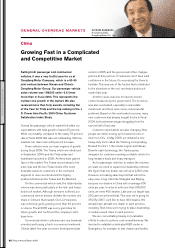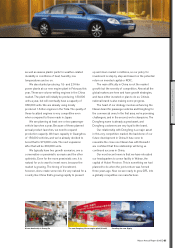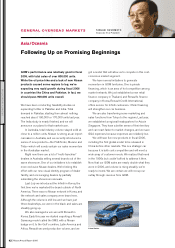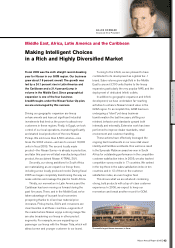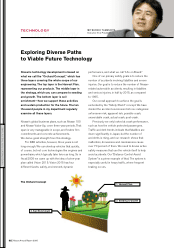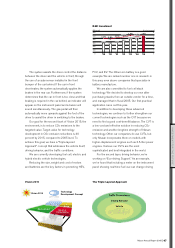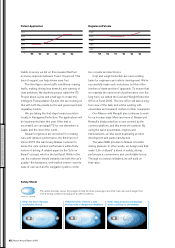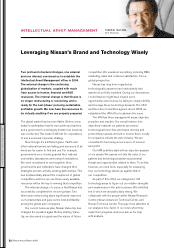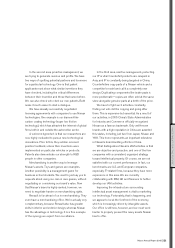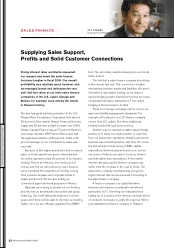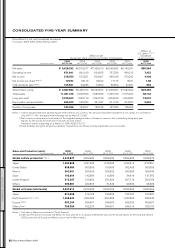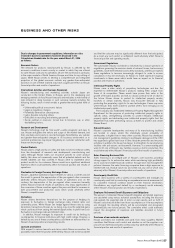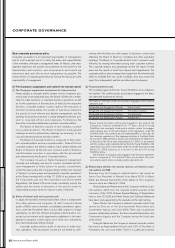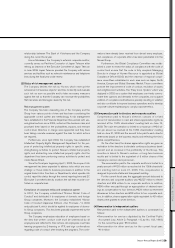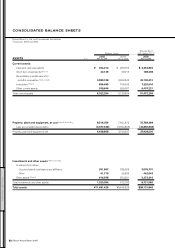Nissan 2006 Annual Report Download - page 52
Download and view the complete annual report
Please find page 52 of the 2006 Nissan annual report below. You can navigate through the pages in the report by either clicking on the pages listed below, or by using the keyword search tool below to find specific information within the annual report.
IInntteelllleeccttuuaall AAsssseettss
Nissan Annual Report 2005
50
Leveraging Nissan’s Brand and Technology Wisely
INTELLECTUAL ASSET MANAGEMENT
Two profound structural changes, one external
and one internal, convinced us to establish the
Intellectual Asset Management office in 2004.
The external change is the continuing
globalization of markets, coupled with much
freer access to human, financial and R&D
resources. The internal change is that Nissan is
no longer restructuring or recovering, and is
ready for the next phase: pursuing sustainable,
profitable growth. We now have the resources to
do virtually anything if we are properly prepared.
The global market has become flatter. Before, every
nation’s marketplace had its own quirks and barriers,
and a government could largely dictate how business
was conducted. This made it difficult for corporations
to use a universal corporate strategy.
Now, though, it’s a different game. Tariffs and
other national barriers are falling, and resources of all
kinds are far easier to find and use. For example,
governments once closely guarded their national
universities, laboratories and research institutions.
We were not allowed to work together. Now
governments and institutions have changed their
strategies and are actively seeking partnerships. This
has fundamentally altered the complexion of global
competition, and how we use these newly available
resources will be the key to winning that competition.
The internal change, of course, is that Nissan has
successfully completed the recovery phase. Two
three-year restructuring plans significantly improved
our fundamentals and gave us the best profitability
among the global auto companies.
Our current business plan, Nissan Value-Up, has
changed the equation again. Before starting Value-
Up, we discussed our goals and the nature of future
competition. We examined everything, including R&D,
marketing, sales and customer satisfaction, from a
global perspective.
Nissan has long been regarded as
technologically advanced and undoubtedly had
assets not yet fully exploited. During our discussions,
I noted that we might have missed some
opportunities and revenue by failing to clearly identify
and leverage these technological assets. The CEO
and Executive Committee agreed, and in 2004 we
established the IAM office to address the issue.
The IAM has three management areas: objective,
proactive and reactive. Our overall mission is to
objectively evaluate our patents, processes,
technological know-how and brand, develop and
protect these assets, and sell or license them, mostly
to companies outside the auto industry. We are
committed to becoming a new source of revenue
and profit.
Our IAM activities start with an objective analysis
of our assets. We assess not only the value of our
patents and technological assets but potential
threats and opportunities related to them. To do this,
however, we need tools, especially for measuring
how our technology stacks up against that of
our competitors.
As part of this effort, we categorized 134
technology areas to figure out our relative strengths
and weaknesses in the auto business. We identified
ten in which we are particularly strong. We
collaborate with the people at the Nissan Research
Center, Nissan Advanced Technical Center, and
Nissan Technical Center. They pay close attention to
our analyses now, factor in our views when they
make their programs, and even ask us for help
with analysis.
TAKESHI ISAYAMA
Vice Chairman
INVESTMENT FOR THE FUTURE


